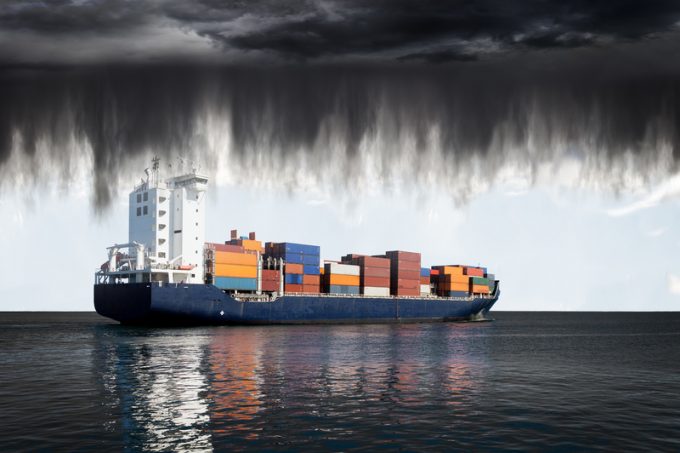Rates still slipping as peak season recedes and port strike threat subsides
Freight rates are continuing their downward correction following the premature peak season and front-loading of ...
GM: RAISING THE ROOF GGM: IN FULL THROTTLE GZIM: MAERSK BOOST KNIN: READ-ACROSSMAERSK: NOT ENOUGHMAERSK: GUIDANCE UPGRADEZIM: ROLLERCOASTERCAT: HEAVY DUTYMAERSK: CATCHING UP PG: DESTOCKING PATTERNSPG: HEALTH CHECKWTC: THE FALLGXO: DEFENSIVE FWRD: RALLYING ON TAKEOVER TALKODFL: STEADY YIELDVW: NEW MODEL NEEDEDWTC: TAKING PROFIT
GM: RAISING THE ROOF GGM: IN FULL THROTTLE GZIM: MAERSK BOOST KNIN: READ-ACROSSMAERSK: NOT ENOUGHMAERSK: GUIDANCE UPGRADEZIM: ROLLERCOASTERCAT: HEAVY DUTYMAERSK: CATCHING UP PG: DESTOCKING PATTERNSPG: HEALTH CHECKWTC: THE FALLGXO: DEFENSIVE FWRD: RALLYING ON TAKEOVER TALKODFL: STEADY YIELDVW: NEW MODEL NEEDEDWTC: TAKING PROFIT

Credit rating and research firm Fitch Ratings has warned that repeating container shipping’s 2017 profitability this year “may prove challenging”.
It said: “The fact that some companies are likely to have remained loss-making in 2017 highlights the ongoing weakness in sector fundamentals due to persistent overcapacity, which may undermine a longer-lasting recovery.”
According to estimates by Drewry, ocean carriers made a profit of some $7bn in 2017, reversing the loss of a similar number the previous year. Market leader Maersk Line posted a full-year net profit of $521m, compared with a loss of $384m in 2016, suggesting a positive outlook.
However, the Danish carrier’s most profitable trading periods were in the first three quarters, its Q4 result showing a disappointing surplus of only $91m, as spot rates plunged on the key Asia-Europe and transpacific tradelanes.
At the other end of the profitability league, restructured South Korean carrier Hyundai Merchant Marine (HMM) posted a loss of $1.1bn for 2017, significantly worse than the year before, albeit impacted by asset losses on vessel sales.
Maersk’s disappointing Q4 was partly due to higher fuel costs insufficiently compensated for by bunker surcharges. But declining spot rates also took their toll. Vincent Clerc, chief commercial officer, advised that there had been a $214 per feu rate erosion between the second quarter and the final weeks of the year.
Fitch noted that the average reading of the Shanghai Containerized Freight Index (SCFI) in Q4 2017 was lower than that of final quarter of 2016.
“It has increased marginally in early 2018, but remains lower on average than in the same period last year,” said Fitch.
The ratings agency cautioned that “freight rates are volatile” and noted that “many previous increases reversed when the supply and demand imbalance returned”.
In the first week after the Chinese new year factory shutdowns, Asian spot rates for the European components of the SCFI declined by almost 10%, while rates to the US plunged 11% and 12% respectively for west coast and east coast ports.
Voicing its concerns, particularly for the Asia to North Europe route, Fitch said: “Deployment of mega-vessels on Europe-Asia trading lanes will continue to contribute to overcapacity on this route and to cascading elsewhere.
“We also expect lower scrapping and fleet idling in 2018, due to improved market conditions, further reducing the gap between net and gross capacity growth.”
Latest data from Alphaliner puts the idle fleet capacity at just 89 vessels in hot or cold lay-up, with just 10 containerships demolished so far this year against about 50 that had been scrapped by the same time in 2017.
Comment on this article